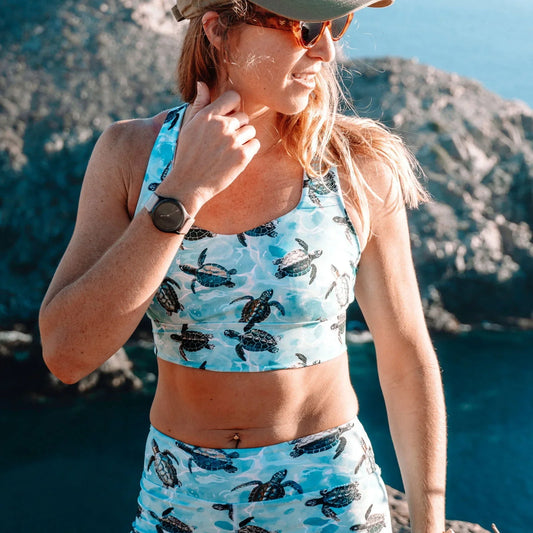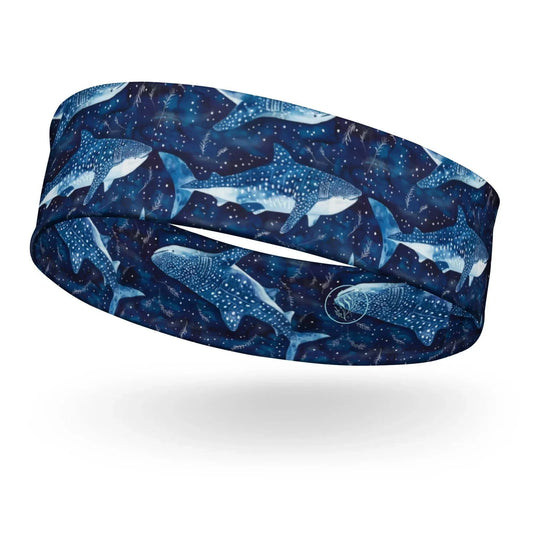
How to Keep Your Scuba Mask from Fogging Up
Angela ZancanaroShare
Picture this: You finally found a mask that fits your face PERFECTLY, you are so sure it won’t leak, and you're so excited to jump into the water for your first dive with it. You apply defog before you go in the water, but after 10 minutes, your mask fogs up! Frustrating, right? Don’t worry—you’re not alone! New masks are especially prone to fogging if you don't treat them before going in the water, but with the right steps, you can fix that for good. Here’s a breakdown of why it happens and the steps you need to take to stop your mask from fogging up on your next dive.
Why Do Masks Fog Up?
Fogging happens when moisture builds up on the lens due to the temperature difference between your face and the water. However, new masks tend to fog up even more due to a thin silicone layer left on the inside of the lens during manufacturing. This layer traps moisture and makes fogging much worse. To prevent this, the first thing you need to do is clean off this residue.
Step 1: Toothpaste Method

The toothpaste method is a simple, safe, and highly effective way to remove this factory silicone coating and prevent fogging from the start. By using a gentle, non-gel fluoride toothpaste, you’re scrubbing off this residue, giving your mask the clean start it needs to stay fog-free during your dives.
Materials You’ll Need:
Fluoride toothpaste (non-gel as these don't work well)Soft cloth or your fingersWarm water
Instructions:
- Apply the Toothpaste: Squeeze a small amount of the fluoride toothpaste onto the inside of the mask lens. The toothpaste works as a mild abrasive to break down and scrub off that silicone layer.
- Rub the Toothpaste: Using your fingers or a soft cloth, rub the toothpaste in small circular motions on the entire surface of the inside lens. Make sure to cover every corner—this should take about 2–3 minutes of gentle scrubbing.
- Rinse with Warm Water: After scrubbing, rinse the mask with warm water until all the toothpaste residue is completely washed off. Be thorough; any leftover toothpaste could irritate your eyes during your dive.
- Test It Out: Fill up a sink or bathtub with water, put on your mask, and submerge your face. Breathe through your snorkel or regulator to simulate your dive and breathe out your nose a couple times. If the mask remains fog-free for a few minutes, you’ve done everything correctly!
- Repeat if Necessary: Some new masks need more than one round of toothpaste treatment to completely remove the silicone layer. If you still notice some fogging you can repeat this method 2-3 times until you have crystal clear vision.
Step 2: Flame Method (Proceed With Caution)

I’ve seen this method commonly used on boats in between dives when there's no other option. Or if you have a particularly stubborn mask that's not working with the toothpaste method. This method is great for burning off any remaining silicone, but it must be done carefully.
Materials You’ll Need:
- A lighter (a long one if you have it)
Instructions:
- Hold the Mask Steady: Take your mask and hold it so the lens is facing you. Make sure you're in a well-ventilated area, away from flammable objects.
- Apply the Flame: Light the flame and hold it near the inside of the mask lens. You’ll start to see a film appear as the flame burns off the silicone residue. Move the flame slowly across the entire lens, but do not hold it in one spot for too long, as this could damage the mask.
- Check for Residue: Once the entire inside lens has been heated, check to see if there’s any visible silicone residue remaining. The lens may look slightly foggy or have spots where the silicone was burned off.
- Rinse and Clean: After using the flame, rinse the mask again under warm water. You can even apply another round of toothpaste scrubbing at this stage to make sure the lens is perfectly clean.
- Test It Out: Take your mask for a test dive. If you followed these steps carefully, you should have significantly less fogging. If any fogging persists, you can repeat the flame process, but make sure to use caution to avoid overheating the mask.
Pre-Dive Anti-Fogging Maintenance
Once you’ve done the toothpaste or flame treatment, the key is maintenance. A clean mask will only stay fog-free if you treat it before every dive. There are tons of sprays and serums marketed for defogging snorkel and scuba masks — and honestly, most of them work the same way. Just look for reef-friendly options whenever possible.
Apply enough product to coat your lenses, leave it on until you’re ready to jump in, swish it around, then rinse your mask once in fresh or saltwater before putting it on.
🧴 Defog Sprays I Recommend
Commercial defog products usually cost around $6–10 for a small bottle — but a little goes a long way. One treatment often lasts multiple dives.
👉 Try:
- Stream2Sea Reef-Friendly Mask Defog – biodegradable, eco-safe, and made for divers.
- GEAR AID Sea Drops Cleaner and Anti-Fog — one of the most popular commercial defog solutions for divers and snorkelers. It’s easy to apply, long-lasting, and safe for glass and plastic lenses. Just add a drop, rub, rinse, and you’re good to go.
(Both are small enough to toss in your dive bag and last dozens of dives.)
👶 Baby Shampoo or Dish Soap Hack
A lot of divers use baby shampoo or even mild dish soap as an easy defog alternative. I personally prefer a tear-free baby shampoo, it’s gentle on your eyes, and way cheaper than store-bought defog options. You can buy it in larger quantities and refill a small container to take in your mask container.
- Burt’s Bees Baby Shampoo & Wash — tear-free, plant-based, and great for sensitive skin. It’s not fully reef-certified but it’s mild enough for travel use and a little goes a long way.
- Dr. Bronner’s Pure-Castile Liquid Soap – Baby Unscented — biodegradable, made with regenerative organic oils, and one of the most reef-friendly soaps you can buy. Works beautifully as a multipurpose wash and mask defog mix.
- Travel Squeeze Bottles (5-Pack) — I got a multipack so I can keep one in my freediving kit, one in my scuba gear, and one in the cooler (because someone always forgets theirs).
Mix a small batch of your chosen soap and water in one of the squeeze bottles, keep it in your mask case, and you’ll always have defog ready to go.
😛 The Classic: Spit
It might sound gross, but divers swear by it — and it’s 100% free. Spit, swish, rinse, and you’re good to go. It’s still the best backup plan if you forget your defog bottle at home.
Dive Habits to Prevent Mask Fog

If you’ve pre-treated your mask, used a defog product, and are still having trouble with mask fog, there may be a few small adjustments in your dive habits that can make all the difference.
-
Avoid Touching the Inside of Your Mask
Especially right after you use defog products. Touching your mask transfers oils into it, negating the product’s effect and dirtying your mask. If you continue to rinse your mask out too many times it negates the defog you just put in. So leave it be and just a simple rinse right before you go in should work. -
Don’t Breathe Out of Your Nose
It may take time to adjust to solely breathing in and out through your mouth, but exhaling through your nose is a common cause of mask fog. Focus on how you’re breathing to see if this might be one of the culprits. -
Make Sure Your Mask Fits Properly
This goes hand in hand with the previous point. If your mask is flooding frequently, you’ll have to breathe out of your nose to clear it, and the moisture getting into your mask will promote the condensation that causes mask fog. In an ideal world, your mask should fit snugly and prevent water from seeping in, reducing the need to clear it frequently. (See our guide HERE)
Ready for Fog-Free Adventures?!

By following these steps and adjusting your habits, you can keep your mask clear and enjoy uninterrupted underwater views. With the right preparation and care, you’ll be ready to explore the depths without the frustration of fogged lenses. So, get out there, breathe easy, and enjoy the clarity of your next dive!



























































